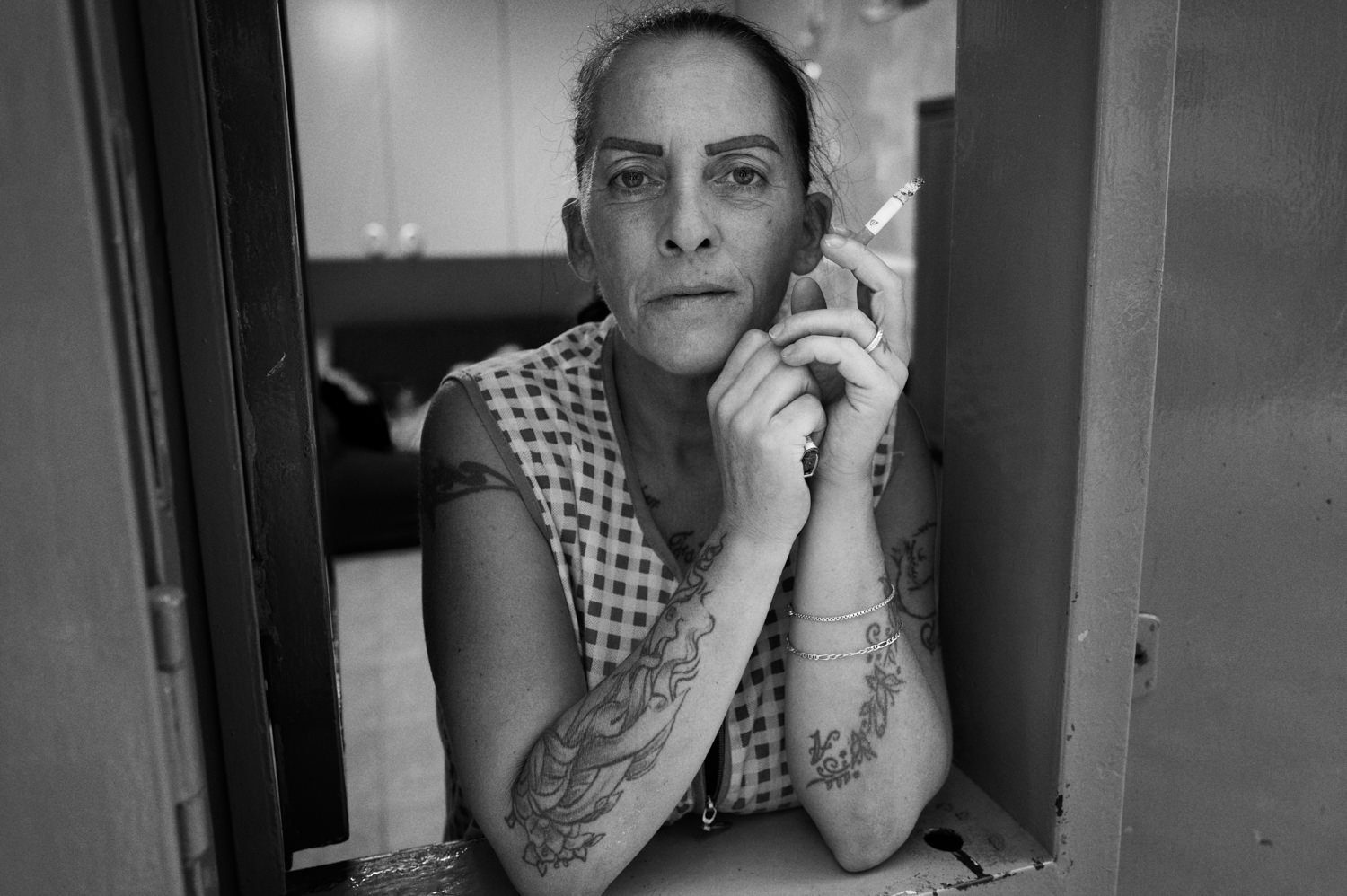There's something magical about that fleeting moment when a stranger's eyes meet your lens. In that fraction of a second, worlds collide, stories intersect, and something profound happens: the birth of a street portrait. Street portraiture isn't just photography; it's an intimate dance between photographer and subject, a delicate balance of technical skill and human connection that unfolds in the theater of public life.
Rome, Leica Q
The roots of this captivating art form run deep through photography's history. When Paul Strand first raised his camera to photograph unsuspecting New Yorkers in the early 1900s, he wasn't just making images – he was pioneering a new way of seeing humanity. Later, the legendary Diane Arbus would walk the same streets, drawing out the extraordinary from seemingly ordinary faces, teaching us that every person carries a universe within them worth exploring.
Today, as I walk these same streets with my Leica Q3 or M11P, I feel connected to this rich legacy. But street portraiture has evolved, becoming something even more nuanced and challenging in our privacy-conscious world. It demands not just technical mastery, but a deep well of empathy and social intelligence.
Napoli, Leica Q3
The heart of street portraiture beats in the realm of human connection. When I spot a potential subject, time seems to slow down. There's an almost electric moment of recognition – something in their expression, their posture, or the way light plays across their features that calls out to be captured. This is where empathy becomes your most vital tool. You must read the invisible language of body posture, facial micro-expressions, and social cues. You need to sense whether someone might welcome your lens or if they're seeking solitude.
This temporal space – this fleeting window of opportunity – is where the magic happens. Sometimes it's just seconds, a brief intersection of lives where you must decide: approach or observe, engage or remain silent. It's a dance of intuition and respect, where timing is everything and sensitivity is paramount.
Tokyo, Leica Q
The approaches to street portraiture are as varied as the subjects themselves. There's the direct gaze – perhaps the most powerful of all. When a subject looks directly into your lens, something extraordinary happens. The photograph becomes a window, not just to their face, but to their essence. These images often emerge from brief but meaningful interactions, where a smile, a nod, or a few kind words create a bridge of trust.
Then there are the unguarded moments, when subjects are lost in their own worlds. These images capture something different – the private face we wear in public spaces. Working with the Q3's face detection system has revolutionized this approach. The camera becomes an extension of your instincts, allowing you to focus on the decisive moment while maintaining that beautiful separation between subject and background that the Summilux lens renders so magnificently at wide apertures.
Rome, Leica Q2
Sometimes, the most compelling portraits don't show faces at all. Photographing subjects from behind introduces an element of mystery that invites viewers to complete the story themselves. These images often speak to universal experiences – solitude, contemplation, the journey rather than the destination.
Rome, Leica Q2
The technical approach to street portraiture requires a different mindset than general street photography. When I'm doing wider street work, capturing scenes and distant subjects, I'll work at f/11 for maximum depth of field. But portrait work on the streets is an entirely different dance. With the Q3, I embrace the remarkable capabilities of its autofocus and face detection system, working with apertures between f/1.7 and f/2.8. This creates that magical separation between subject and background while maintaining tack-sharp focus on the eyes. Auto ISO with shutter speeds around 1/250s ensures my subjects remain crisp and clear, letting me focus entirely on the human connection unfolding before me.
Hong Kong, Leica M11
The M11P with the 50mm Summilux brings its own special magic to street portraiture. Here, I typically work around f/2, embracing the lens's legendary rendering and that ethereal quality it brings to backgrounds. Manual focusing becomes a meditation, a practiced art that, while demanding, brings its own rewards. Again, auto ISO with shutter speeds around 1/250s keeps my subjects frozen in time while I concentrate on the delicate dance of focus and composition.
This technical foundation creates images with a distinct signature. The shallow depth of field isolates subjects from their environment without completely disconnecting them from it, producing portraits that feel intimate yet grounded in their urban context. The background melts into a tapestry of colors and shapes, while subjects emerge with an almost three-dimensional presence.
Trieste, Leica Q2
But perhaps the most important aspect of street portraiture isn't technical at all – it's the ability to create genuine, if brief, connections with strangers. Every portrait is a collaboration, even if unspoken. It's about recognizing the dignity and beauty in every face, every gesture, every moment of human existence.
In the end, street portraiture is about stories – those we tell about others and, inevitably, those we tell about ourselves. Each image becomes a mirror, reflecting not just our subjects but our own humanity. When I raise my Leica to my eye, whether it's the Q3 or the M11P, I'm not just making photographs – I'm participating in the grand tradition of bearing witness to the extraordinary tapestry of human life that unfolds on our streets every day.
Rome, Leica Q3
This is what makes street portraiture so endlessly fascinating. It's not just about capturing faces; it's about capturing moments of truth, fleeting expressions of the human condition. In a world that often feels increasingly disconnected, these brief encounters remind us of our shared humanity, one frame at a time.
Visit my Street Photography Portrait Gallery.










































